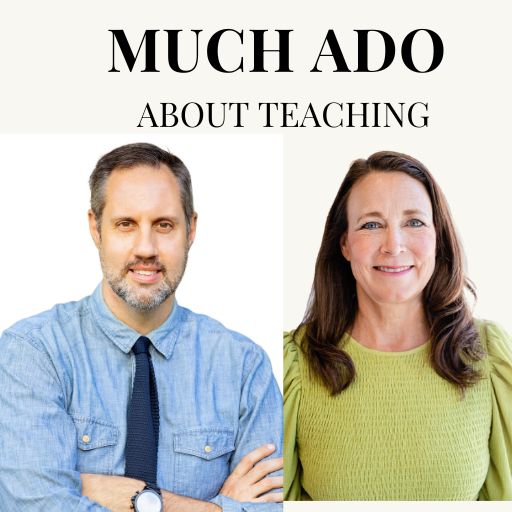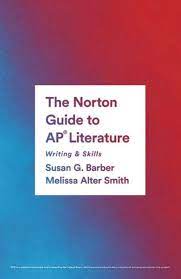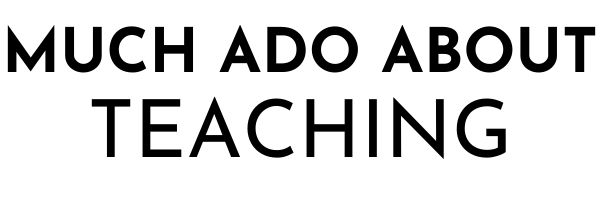Here’s the first of 3 posts from this year’s reading. I asked two readers for each question to answer a few questions and share their thoughts. Thanks to David Choate and Gina Kortuem for today’s post. You can read more about them following their reflections.
AP® Literature Free Response Questions 2022
What did you notice in upper-half essays?
DC: Overall, “Shaving” was a very accessible poem for students, and I saw more students earn 3 points in row B compared to the poetry response from last year. Students who earned 3-4 points had not just a grasp on the subject of the poem but were also able to explain how one or more literary elements supported their claim(s). Students focused on elements such as metaphor, simile, symbolism, imagery, and tone. Those students who earned the 4th point in row B were able to discuss multiple devices and were able to move beyond the why (“the symbolism of the shaving cream establishes the memory of his father”) and explain how multiple devices supported the various claims (“By comparing the narrator’s memories of their passed father with a sudden, jarring stop in hair growth, indicates the abruptness of the father’s death.”). Student essays in the upper-half were also clearly organized (established a clear and explicit line of reasoning) and focused on 2-3 ideas. In other words, these students recognized shifts in tone, two ways the shaving impacted the speaker, or two different meanings of shaving.
GK: Upper-half essays consistently analyzed the purpose and significance of a poem, rather than summarizing a meaning of a poem. Strong introduction paragraphs weren’t necessarily long (2-3 sentences is all you need), but responded to the prompt with adjectives and established a line of reasoning. I also noticed that essays that scored 4 in the Evidence and Commentary (getting full credit) avoided organizing essays by literary terms and instead had unique topic sentences reflecting the poem’s complex message. This allowed analysis to grow and evolve, rather than reflect a stagnant thesis.
What did you notice in lower-half essays?
DC: First, I rarely saw misreads with this poem. Even students in the lower-half grasped the subject of the poem; however, these student essays often summarized the meaning of the poem or a device or simply relied on “this proves statements” (“the speaker is shaving which proves he wants to forget his father”). These essays had the skeleton of an upper-half essay but couldn’t quite succinctly or explicitly explain why or how the poet used a particular device. These essays lacked a line of reasoning and many of these essays relied on basic thesis statements (“Blanco uses literary devices to create a sad tone when shaving.”) rather than thesis statements that recognized complexity in the speaker’s attitude towards the act of shaving.
GK: Lower-half essays tended to summarize a poem’s meaning or literary terms with little analysis on its significance. A poem analysis should ultimately answer “Why does this matter?” and those that score lower do not do that. The lowest ones offer a cursory summary of the poem’s literary terms with little to say about the poem’s significance. I also noticed a lot of vague analysis of literary terms, such as “the imagery helps us paint a picture” or “in lines 3-4 you see alliteration, bringing more attention to the lines.” These do not elucidate anything on the poem’s significance (the “why does it matter?”), earning only 1 or 2 in Evidence and Commentary.
What makes for a strong line of reasoning?
DC: The essays organized by insights seemed to score the highest. These essays focused on 2-3 insights explored within the poem and used transitions to connect the complexities explored. In addition, those students who used transitions within their body paragraphs also seemed to score higher than those who did not (another device that establishes…). I also noticed that students who established a line of reasoning within their introductory paragraph and/or thesis presented a more organized essay and presented their argument with confidence and clarity. I did not always agree with some student assessments of the poem; however, students who were able to use transitions and see layers within the poem oftentimes scored high regardless of their interpretation.
GK: A strong line of reasoning, to me, means that you’ve evolved your claim somehow since you established it in the thesis. This is why most prompts ask about complexity, which means two things are happening at once. If you say that the poem shows a complex view, I expect you to tell me how something contrasts, changes, shifts, or moves in attitude. If you simply say the poem is about grief, then prove it’s about grief, you haven’t evolved that initial claim, therefore there is no line of reasoning.
Let’s talk sophistication . . .
DC: First, I did notice more students earn this point this year which is a positive sign. Last year being online, I felt there was much confusion about this point, and I think many essays did not earn the point because of that confusion. I do still feel this point is somewhat subjective, but I do feel that readers this year were more likely to reward students who recognized complexities or wrote in a persuasive style. The most common way I noticed students earning this point was employing a style that is consistently vivid and persuasive. I did not see any essays situating the poem in a broader context or providing an alternative interpretation. I did see some student essays that recognized tensions or complexities but often students would fail to make note of those tensions throughout the poem. The most common tensions or complexities students recognized were the longing/melancholy/hopeful father and son relationship or the notion that shaving provided the speaker with a new understanding about nature/life/death/identity/maturity.
GK: Hot take: I’m convinced the sophistication point is not worth chasing in classroom instruction. Students who earn the sophistication point usually walk in the door with this skill in the fall. They write well because they are avid readers or participate in some kind of debate activity, making them very persuasive. It feels like a difficult thing to teach in addition to the other requirements of AP Lit, so I don’t see the need to incorporate vocabulary drills in class. However, if a student told me they needed that sophistication point, however, I’d tell them they need to be reading EVERY DAY. Students who avidly read a variety of voices and genres will grow in their writing skills, but it’s a process that takes time.
Any teaching points connected to what you learned at the reading?
DC: Teaching a line of reasoning is so important. I plan on introducing this early and often to begin the school year. The LOR is what separates an upper-half essay from a lower-half essay. Last year I used Roy Smith’s Hand Turkey lesson with great success, and I plan on using that lesson earlier in the school year—maybe even multiple times. In connection with the line of reasoning, I want to encourage students to begin recognizing ideas or attitudes in opposition. In other words, what are 2-3 tones or contrasting ideas presented within a work. This will help students not only recognize complexity but also help students easily establish a line of reasoning. I often worry about students recognizing the “correct” theme or idea presented, but from this reading I noticed that it really does not matter what ideas a student recognizes as long as those ideas can be supported with evidence from the text. What really matters is recognizing those images or ideas in opposition and teaching students to recognize those complexities will create richer conversations and arguments.
GK: I think there’s a lot of value in comparing sample essays that score 2, 3, and 4 in Evidence and Commentary. Since most get the thesis point and most don’t get the sophistication point, it’s imperative to emphasize strong Evidence and Commentary strategies, such as establishing a growing line of reasoning and organizing your essay in a clear and logical way.
Since I scored the poetry essay, I always walk away knowing I need to do more with poetry. Despite our best efforts, students often feel helpless and lost when faced with a poem. I’m going to do more to emphasize poem analysis based on interpretation. I like poems like Olive Senior’s “Plants,” Gwendolyn Brooks’ “We Real Cool,” and Yeats’ “The Second Coming” that are open to a variety of interpretations. Letting students grapple with multiple interpretations, especially ones that are valid, help them learn that poetry analysis is not about solving a riddle; it’s about responding to the prompt in a defensible interpretation, then proving that interpretation with support.
Anything else you want to say?
DC: Each and every teacher should be applauded for preparing students for the exam and giving them the confidence to write about a poem—not always an easy task. I read more well-developed essays than I have in my previous nine years as a reader. I know this was not an easy year for countless educators, but the student responses this year are proof that what educators do day in and day out has a direct impact on students and their success. Thank you to every AP Lit teacher for allowing me a glimpse of the magic you do every day.
GK: While I enjoyed the Blanco poem, I noticed that there weren’t many misreadings or students that seemed stuck. A lot of us called it a relatively “safe” poem, at least in terms of interpretation. I’d situate it early in the year to help them explore the impact of multiple poetic elements rather than emphasize unique interpretations, like I do with more complicated poems later in the year. It’s a great poem for discussing AP Lit Enduring Understandings 5 and 6 (figurative language).
Each year at the reading, there’s a professional night typically featuring a poet. This year, however, Chief Reader Steve Price chose to have a few teachers share how they incorporate poetry into the classroom. Here’s a link to the presentation: Powerful Poetry Today
David Choate has been teaching English for 20 years. This was his 10th year to attend the AP reading and 6th year to score the poetry question. He lives in St. Louis, MO with his wife and three children, ages 8, 10, and 12. His hobbies include being a soccer dad, reading, and writing bad poetry for his students.

Gina Kortuem is a teacher, mother, and educational resource creator who lives in St. Paul, MN with her husband and three children. She has taught AP English Literature, basic and Honors levels grades 9-10, Shakespearean Literature, World Literature, British Literature, Journalism, and Creative Writing and is an award-winning One Act Play writer.













2 comments